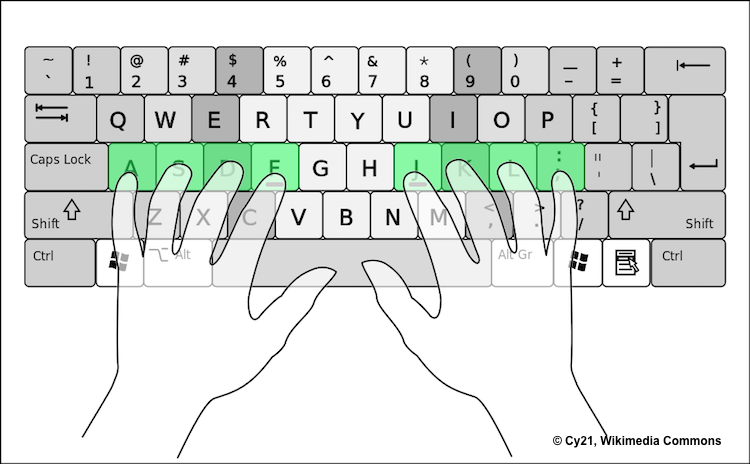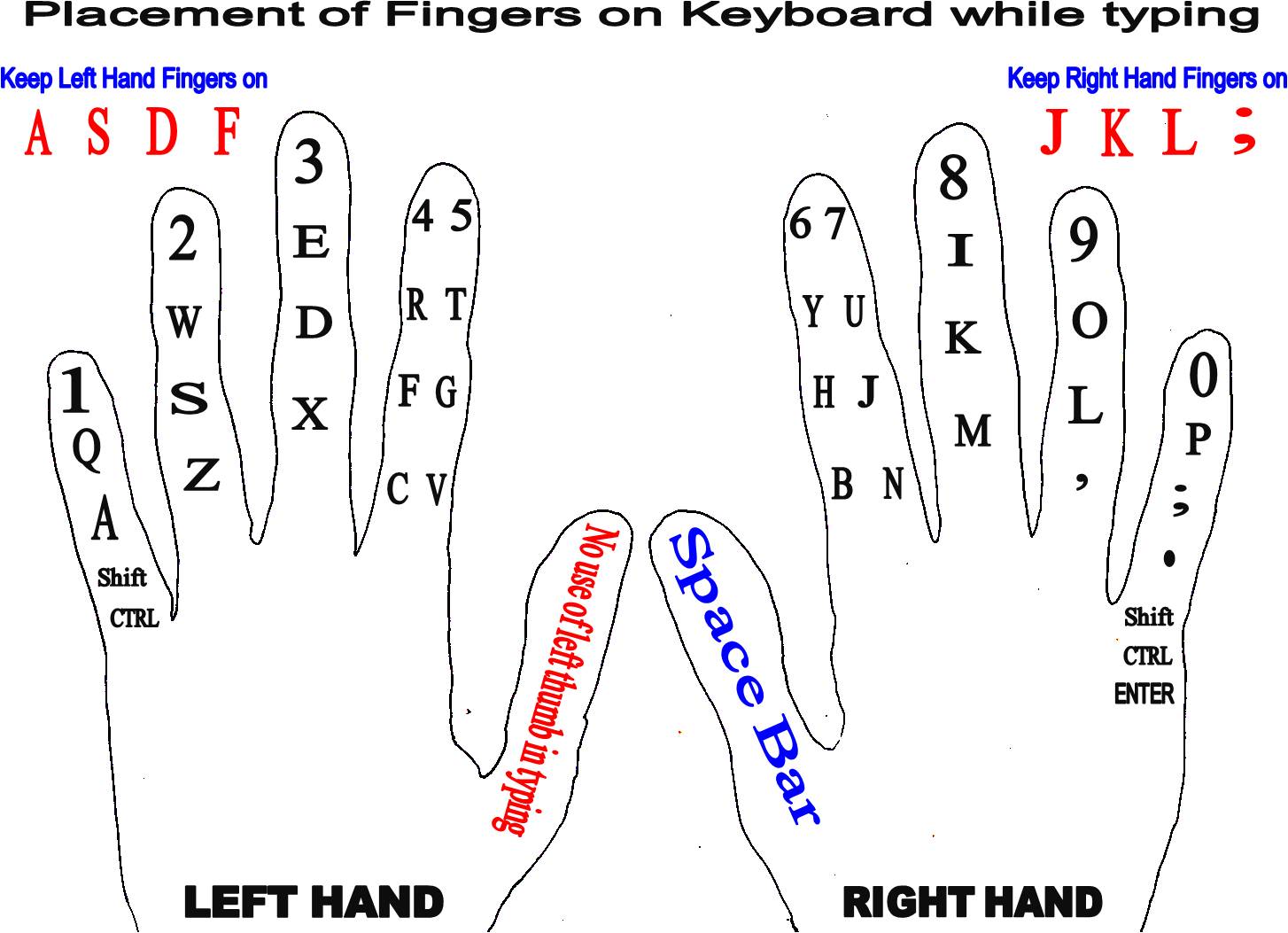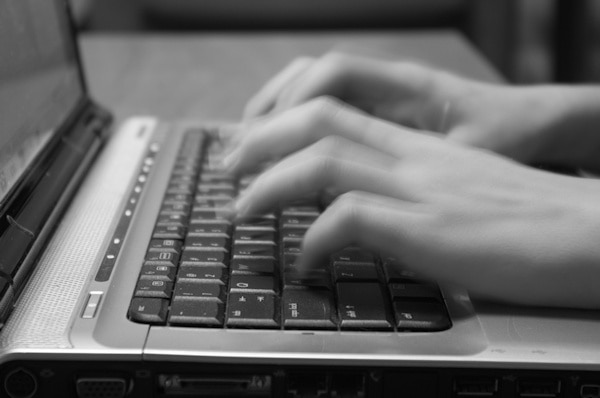
The fourth finger on the left hand side and the fourth finger on the right hand side are used to strike these keys. The remaining keys (letters) on the home row are” g, h”. Note: 1 represent the index finger, 2 represent the middle finger, 3 represent the ring finger and 4 stands for the little finger.
#Typing fingers move from home row series#
The movement should be repeated several times, with a space between each series of letters. With the same finger reach upwards and slightly to the left to strike the q key, and then return the finger to the second row and again strike the key for a. With the little finger of the left hand strike the guide key a. In order to associate correctly the keys of the second and third rows, the first practice will be to reach from the home keys to the third row. They are in a position above and slightly to the left of their corresponding keys in the second row. When the correct position at the machine has been taken up and the fingers have been placed on the home keys, the keys of the second row can be operated and memorized. However, this section of the keyboard training mastery deals with the row of keys which introduces the Arabic numerals (1 to 0) and the hyphen.

Since numerical errors in any piece of typewritten work may cause much harm, therefore maximum concentration on the correct fingering in the very early stages of training is very important to attain that degree of efficiency required. The remaining fingers on the left except the left and right thumb are used to strike “sdf” while the rest fingers on the right hand are used to strike “lkj”.Īctivity: Practice exercise 1 from Walmsley’s Commercial Typewriting by Aileen M PrinceĬorrect Ways for Finger Position on the Top Row, Upper Row, Home Row and Nottem Rowįigures play one of the most important parts in typewriting. The two little fingers are used to strike the guide keys (a & ).

First of all, master the keyboard to know the positions of the keys, and then type without looking at the keyboard but the copy.Īfter placing the fingers on the home keys, the fingers should strike a key at a time to avoid key jam. “asdf and lkj” are therefore called home keys.

It is from here that the fingers move up and down the entire keyboard. The four fingers excluding the thumb of the left hand are placed on “asdf” while the four fingers of the right hand are placed on “ lkj”.


 0 kommentar(er)
0 kommentar(er)
